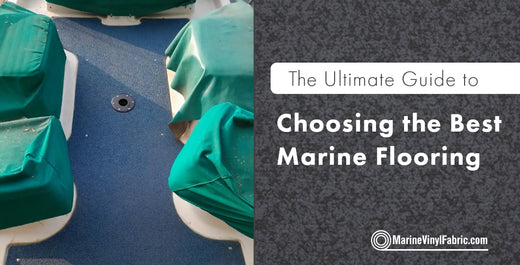
The Ultimate Guide to Choosing the Best Marine Flooring
Congratulations! You're looking for the perfect new marine flooring, and you've come to the right place. We understand the abundance of options can be overwhelming, so we'll guide you through everything you need to know to make an informed decision. The right flooring will enhance your boat's appearance , functionality. Consider it an investment!
Factors to Consider:
With so many options of marine flooring to choose from, how do you choose the best material for your boat? Primary factors to consider would be
Cost: Determine your spending limit and explore options that fit comfortably within it.
Warranty: Checking the warranty is beneficial because it can give you a better understanding of how long this product may last
Durability: When you are making an investment on your boat you want to make sure that this floor material is something that can provide sufficient protection and support.
Maintenance: Cleaning and upkeep of the material is something to consider. If there is the potential of a lot of spillage, food debris, tracking in mud etc. you would probably consider a flooring that would be easier to clean.
Installation: Installation costs may vary but can range from $1,000-$3,000. Most installations of marine flooring can be done on your own and save you lots of money.
Often the specifications of the product are overlooked. This can provide a lot of information about the material. Don't underestimate the power of tests performed at labs! Look for information like mold/mildew resistance, UV ratings, fading/weathering , water resistance. Other considerations include cushion, heat resistance and slip resistance to ensure your flooring performs optimally.
There are a variety of materials to choose from such as carpet, adhesive foam pads, PVC, woven vinyl, etc. We have provided some information about different products with pros and cons of each flooring type to help guide you towards the optimal flooring that fits your needs.
Types of Materials:
Let’s consider what type of boat you have and how it is used. Do you prefer simple joy rides cruising around in style or are you a sportsman who enjoys fishing? Depending on use, boats can collect grime, dirt, and other debris over time. For example a fishing boat can get really dirty and will need to be cleaned frequently in comparison to a boat used for cruising around and enjoying company.
When searching for marine flooring you will come across a variety of options. Some options available may not be the right fit. Learning the pros and cons of different materials can help you when making this purchase. Let’s get started.
1. Flexa Woven Vinyl Marine Flooring (Top Recommended):
Imagine a flooring that has a variety of designs and colors, all while being waterproof, UV-resistant, and remarkably easy to clean. Flexa woven vinyl ticks all these boxes, offering excellent stability and slip resistance to keep your crew safe and sound. While it might cost slightly more than some alternatives, its unique style, functionality, and versatility make it a top contender.
- Style: Flexa woven vinyl comes in a variety of designs and colors, allowing you to match your boat's personality perfectly. Whether you want classic teak wood patterns, modern geometric prints, or anything in between, there's a Flexa vinyl for you.
- Performance: This material is a champion of durability. It's waterproof, UV-resistant, and won't fade or crack under the harsh sun. Additionally, its closed-cell construction resists mold and mildew growth, keeping your boat hygienic and fresh.
- Comfort & Safety: Underfoot, Flexa vinyl offers a comfortable, cushioned feel, ideal for long days at sea. Its textured surface provides excellent slip resistance, even when wet, ensuring the safety of your crew.
- Maintenance: Maintaining Flexa vinyl is a breeze. Regular sweeping and mopping with mild soap and water are all it takes to keep it looking its best. Unlike carpet, it won't trap dirt or odors, making cleaning hassle-free.
Cleaning
Cleaning your flooring is important to keep it looking good, smelling fresh and to increase the longevity of your floor. You also want to ensure you are using the right products for your flooring. No one wants scratched up vinyl, or bleach stains on their carpet. Here are some recommendations and tips for cleaning your marine flooring.
Many Vinyl’s are not stain proof materials. Heavy stainers such as some dyes or harsh chemicals can cause permanent staining. For Dirt and grime it is recommended to first brush or sweep with water (preferably warm), apply soap (mild soaps and detergents) or a cleaner specific for vinyl and let it penetrate for a few minutes. Lightly scrub the area with a soft to medium stiff brush. This should get the majority of stains out. Marine Vinyl is also mildew resistant, however over time especially in humid climates there could be some build up; in this case you can consider a small amount of bleach to be mixed into water to clean. This should be used as a last resort or in extreme cases.It is advised to never use harsh chemicals such as tar removers, acetone, kerosene or Oxalic acid.
Here are the tips to follow before doing the cleaning
TIP #1
Before using bleach… check with the manufacturer or owners manual to see if bleach is acceptable for cleaning as it could cause discoloration. Assuming bleach can be used, make sure it is properly diluted with water and tested in an inconspicuous area first. Also make sure you keep bleach only on the flooring. Most marine vinyl upholstery and thread can not hold up to bleach so be sure to keep the bleach contained to the floor only.
TIP #2
Most boat floors can be cleaned with a power washer, but sometimes the high pressure at a close range can cause damage to your flooring and upholstery. Make sure you choose an appropriate power setting when cleaning upholstery or fabrics. In general we don't recommend using power washers to clean boat flooring unless you are being very careful.

2. Marine Carpeting (Cheapest Choice):
Marine Carpeting is soft, visually appealing, and relatively inexpensive that offers a classic touch to your boat. However, remember that beauty often comes with responsibility. This material can trap sand, odors, and moisture, potentially leading to mold growth if not maintained properly. Regular cleaning and upkeep are essential to keep your carpeted haven shipshape.
- Style: Marine carpet comes in a variety of colors and textures, allowing you to personalize your boat's interior. Opt for plush, comfortable carpeting for a luxurious feel, or choose a low-profile option for easier cleaning.
- Comfort: Carpet's undeniable advantage is its softness and warmth underfoot, making it ideal for barefoot comfort. It's particularly pleasant on colder days or for boats that spend more time in enclosed areas.
- Cost-Effectiveness: Marine carpet is generally the most affordable flooring option, making it an attractive choice for budget-conscious boaters. However, remember to factor in the extra cost of ongoing maintenance and potential replacements due to wear and tear.
- Maintenance: Frequent cleaning and airing out are crucial to prevent moisture buildup and mold growth. Vacuuming regularly and treating spills promptly are essential for maintaining a fresh and hygienic environment.
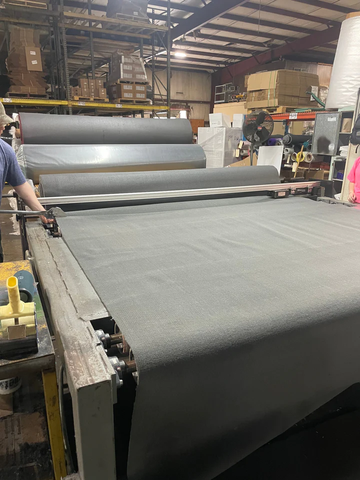
-
EVA Foam Flooring (Easiest Install):
EVA, or Ethylene Vinyl Acetate is an elasticized closed-cell foam material that shares characteristics of rubber such as softness and flexibility. Lightweight, affordable, and available in a vibrant array of colors and designs, EVA foam flooring has quickly become a popular choice. It's resistant to seawater corrosion and UV rays, requires minimal maintenance, and provides excellent cushioning underfoot.
However, be mindful that many EVA foam materials offer peel and stick installation, to apply like a sticker to places on the boat. There are concerns about the edges curling overtime with use and sun exposure. These can also tear/scratch easier
4. PVC Boat Flooring:
Polyvinyl chloride, better known as PVC, is a synthetic plastic polymer that is actually very similar to Vinyl flooring. PVC flooring is typically a solid sheet of PVC (like a roll of linoleum flooring). Typically aren’t as attractive as other flooring as it's one solid piece and has less color and style choices? But they offer low maintenance and durability. It's a hard feeling that might not be for everyone, and the color and style options are more limited compared to other choices.

Installation:
Each flooring type has specific installation requirements. Refer to the manufacturer's instructions for the best outcome. We've provided general steps for common materials like carpet and vinyl flooring.
Different Marine Flooring types usually result in different installation processes. Most flooring needs to be installed with glue/adhesive. Not all glue is equal in an outdoor application. We recommend this Boat Glue AAT 390 Marine and Exterior Adhesive for most projects.
Some commercial products offer adhesive backing on the material and can provide ease of installation. If there is a product you find with an adhesive backing refer to installation process number 1. The two installation steps offered here are beneficial if you are applying carpet, or a type of vinyl flooring. Rubber flooring that comes in mats could also fall under the provided steps.
Adhesive Backed Products:
- Materials: You will need mylar sheets (clear), a razor blade (box cutter knife), a dark marker, masking tape, or painters tape, and a ruler.(Mylar sheets are available on Amazon).
- Instructions: Remove all hardware from boat and clear the boat floor
- Lay the mylar sheet down; you could lay the sheets down to cover individual panels for smaller panels OR lay down the entire rolls covering the entire floor and make several templates from it.
- After laying down mylar sheet, tape it down and make sure it is secure. This will help with tracing panels and improve precision
- Trace an outline of the panels or planned areas for padding. You can use the ruler to create precise lines.
- Remove the outline mylar sheet so you can begin the cutting process
- Lay the outlined template on top of the vinyl intended for use. Tape the template to the vinyl securely.
- Use a razor blade to cut the intended pieces
- For the application process make sure you clean the floor of the boat well
- It is preferable to spray down with water then use an ammonia based cleaner such as Windex, rinse that off and then finish off with acetone.
- After cleaning, you can begin placing the templates down
- When placed in designated areas tape down half of the cut out securely
- With the half un-taped, begin adhering the material to the floor from the inside out. Make sure to go outwards and roll on smoothly to prevent air bubbles
- After properly adhering the material, remove the tape on the other side and adhere the rest
- Roll from the inside then outwards
Carpet Installation:
- Clear the boat and organize removable items.
- Remove lids for easier work on larger areas.
- Carefully remove existing carpet from the front deck and use it as a template for new carpet.
- Trace and cut the new carpet template, allowing extra room for adjustments.
- Clean the exposed boat floor with a wire brush and metal putty knife.
- Use oil-based outdoor carpet adhesive for proper adhesion.
- Start applying adhesive and carpet from the top, working in sections from front to back. Use a flat weight to smooth out the carpet.
- Apply adhesive where the previous carpet was for a proper fit.
- Reinstall lids last, marking hinge locations on the new carpet beforehand.
- Create a template if needed, allowing extra room and measuring sides for complete coverage.
- Apply adhesive evenly to the lid and attach the carpet, ensuring even pressure.
- Create seamless folds by drawing straight lines from the template sides outwards, avoiding cutting corners too short.
- Clamp the sides and ensure hinge alignment before drilling.
- Reinstall all hardware after adhering the carpet to all designated areas.
With this guide, you're well-equipped to choose the perfect marine flooring for your boat. Remember to consider your needs, budget, and desired features. By following our tips and installation instructions, you'll enjoy a beautiful, functional, and long-lasting new floor for your boating adventures!
We know there is a lot of amazing information in this article, but sometimes it can be very overwhelming. If you have any questions or need help picking out the best marine flooring for your project feel free to reach out to us at Support@MarineVinylFabric.com
Credit: Thank you Denise Sada-Romero for helping write this extremely helpful article.


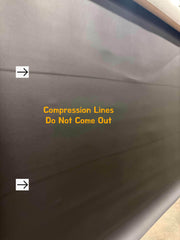
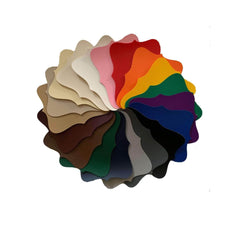
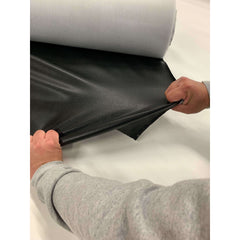
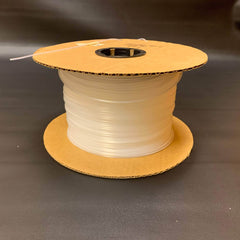


Leave a comment
This site is protected by hCaptcha and the hCaptcha Privacy Policy and Terms of Service apply.